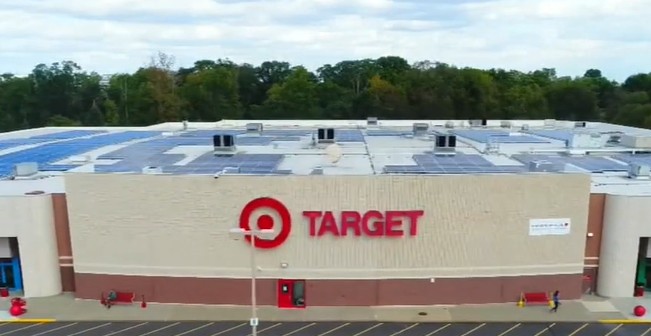Everyone knows recycling is important, but how much of the waste in your recycling bin actually gets recycled?
Unfortunately, New York City only recycles about one-fifth of its garbage: around 8 percent of trash from homes and about 25 percent from businesses, according to the city’s Department of Sanitation. While those numbers are discouraging, this makes it all the more important to correctly recycle the things that actually get recycled. If you’ve always been a person who just throws anything you think may vaguely be made of paper and plastic into the recycling bin, it’s time to step it up.
The below information on recycling correctly is taken from NYC.gov.
Paper and Corrugated Cardboard
“Rules for Recycling Paper
Place mixed paper, newspapers, magazines, catalogs, and phone books out for recycling collection using any one of the following methods:
- Tie with twine into bundles no taller than 18 inches
- Place in clear, untinted plastic bags between 13 and 55 gallons
- Place in bins 32 gallons or less with green labels on both sides and the lid.
The bag or container must weigh no more than 60 pounds when placed out for collection. Bins must be secured with a tight-fitting lid.
The City does not give away green recycling bins.
Rules for Recycling Corrugated Cardboard
Only corrugated cardboard boxes may be recycled as corrugated cardboard. Heavily soiled or greasy cardboard should be disposed of with regular trash.
Corrugated cardboard must be flattened and tied with sturdy twine into bundles 18 inches tall or smaller. Bundles must not be placed in containers or clear bags unless broken into small pieces.
In buildings with mechanized collection, cardboard must be collapsed and placed into designated dumpsters.
Key Takeaways:
- You need to tie your cardboard into bundles.
- Greasy or food-covered cardboard or paper should go in the regular trash.
- Paper needs to be put in a clear bag or tied together with twine.
- Always fold up your cardboard
Plastic
“Rules for Recycling Plastic
- Rinse plastic containers, beverage cartons, and drink boxes before recycling
- Plastic can be mixed with metal and glass recyclables, but never with paper recyclables.
- Place plastic items in clear, untinted bags or blue-labeled recycling bins with a tight-fitting lid.
- Clear, untinted bags must be between 13 and 55 gallons in size and weigh no more than 60 pounds when placed out for collection.
- Containers must be 32 gallons or less and have blue labels on both sides and the lid. Containers must weigh no more than 60 pounds when placed out for collection.
To dispose of a plastic recycling or trash container, all receptacles should be clearly labeled as trash and put at the curb on the proper recycling collection day so that the Department of Sanitation will know that they should be collected.
Plastic Items That Can Be Recycled
- Plastic bottles, cups, jars, and jugs
- Beverage cartons and drink boxes (juice cartons, juice boxes)
- Milk cartons
- Plastic cutlery (spoons, forks, knives)
- Plastic plates
- Plastic hangers
- Rigid plastic caps and lids
- Rigid plastic food containers (Tupperware, yogurt, deli, hummus, dairy tubs, cookie tray inserts, “clamshell” containers, and other plastic takeout containers)
- Rigid plastic nonfood containers
- Rigid plastic packaging (“Blisterpak” and “clamshell” consumer packaging, acetate boxes)
- Rigid plastic housewares (flower pots, mixing bowls, plastic appliances, etc.)
- Bulk plastic (crates, buckets, pails, furniture, large toys, large appliances, etc.)
- Plastic appliances
- CDs, DVDs, disks, vinyl records, CD and DVD cases
- Satellite dishes
- Telephones
Plastic Items That Can’t Be Recycled
- Styrofoam/plastic foam items (foam cups, foam egg cartons, foam trays, foam packing peanuts, foam sporting equipment, etc.)
- Plastic bags, wrappers, shower curtains, and all kinds of plastic “film”
- Plastic rings from soda and beer cans
- Cell phones
- Cassettes, VHS tapes
- Sports balls (basketballs, bowling balls, soccer balls, footballs, yoga balls, etc.)
- Plastic tubes (toothpaste, lotion, cosmetics, etc.)
- Single-serve food and drink squeezable pouches (juice pouches, baby food squeeze pouches, yogurt-to-go pouches, etc.)
- Garden hoses
- PVC pipes (must be no longer than 4 feet and placed out as bulk trash)
- Containers that held dangerous or corrosive chemicals
- Pens and markers
- 3-ring binders (if separate, the metal rings can be recycled)
- Umbrellas
- Lighters
- Luggage”
- Plastic food containers must be rinsed well
- Plastic must be separated from paper recyclables, though it can be mixed with glass
- Use a blue bin for plastics
Metal
“Rules for Recycling Metal
- Metal can be mixed with plastic and glass recyclables, but never with paper recyclables.
- Place metal items in clear, untinted bags or blue-labeled recycling bins with a tight-fitting lid.
- Clear, untinted bags must be between 13 and 55 gallons in size and weigh no more than 60 pounds when placed out for collection.
- Containers must be 32 gallons or less and have blue labels on both sides and the lid. Containers must weigh no more than 60 pounds when placed out for collection.
Large metal items, such as appliances, must be placed at curbside next to the recycling container. For appliances containing CFC gas, a CFC and Freon Removal appointment must be made prior to disposal.
To dispose of a metal recycling or trash container, all receptacles should be clearly labeled as refuse and put at the curb on the proper recycling collection day so that the Department of Sanitation will know that they should be collected.
Metal Items That Can Be Recycled
- Aerosol cans (empty)
- Aluminum foil wrap and trays
- Clean metallic car parts
- Dried-out paint cans (metal lids may be recycled separately)
- Faucets
- Food cans (empty and clean)
- Household metal (wire hangers with paper removed)
- Irons
- Knife blades (Blades of sharp metal knives (such as carving or chef’s knives) should be wrapped in cardboard, taped, labeled “CAUTION: SHARP” and placed out with metal/glass/plastic recyclables)
- Lighting fixtures
- Nuts and bolts
- Metal utensils (including forks, spoons, and knives)
- Metal caps
- Pots and pans
- Satellite dish
- Small appliances that are mostly metal”
- Do not mix your metal recyclables with paper recyclables.
- Clearly mark large metal items you intend to recycle.
Bulky Metal Items
Large items that are all metal or mostly metal are recyclable as bulk items. If an item exceeds the listed weight, height, or amount requirements, you must hire a private carter for disposal.
Large items that are all metal or mostly metal and are recyclable as bulk items include:
- Air conditioners
- Auto parts (containing no hazardous materials or chemicals)
- Aluminum lawn furniture with plastic webbing
- Barbecue grills
- Bedsprings/Metal bed frames
- Bicycles
- Boilers
- Cabinets and appliances
- Clothes dryers
- Dishwashers
- Furniture
- Generators (less than 100 pounds)
- Lawnmower (empty fuel or bring to SAFE disposal event)
- Ovens
- Pipes (no longer than 4 feet)
- Porcelain-coated metal bathtubs and sinks
- Radiators
- Snow blowers (less than 100 pounds)
- Washing machines
- Water heaters (50 gallons or less)
Metal Compressed Gas Tanks
You can put fire extinguishers and helium tanks out for collection or take them back to where you bought them.
If you put them out, first empty them and remove the head. To empty an extinguisher, spray it into a damp paper bag.
Sanitation does not collect used compressed gas tanks such as propane, oxygen, and acetylene because they can explode in the garbage truck. You must take these tanks back to where you bought them.
Glass
Rules for Recycling Glass
- Only glass bottles and jars may be recycled as glass.
- Rinse the glass before you recycle it.
- Glass can be mixed with metal and plastic recyclables, but never with paper recyclables.
- Place glass in clear, untinted bags or blue-labeled recycling bins secured with a tight-fitting lid.
- Clear, untinted bags must be between 13 and 55 gallons in size and weigh no more than 60 pounds when placed out for collection.
- Containers must be 32 gallons or less and have blue labels on both sides and the lid. Containers must weigh no more than 60 pounds when placed out for collection.
Glass Items That Can’t Be Recycled
- Drinking glasses and glassware
- Eyeglasses
- Glass tables
- Glass windows
- Light bulbs
- Mirrors
Broken Glass
To avoid bag punctures, broken glass should be placed into a cardboard box labeled “broken glass.” The box should be sealed with tape and placed into a trash can or securely tied trash bag. Small containers of broken glass may be placed directly into a trash can or bag.
Larger, properly sealed, and labeled cardboard boxes that contain broken glass can be placed out for collection next to regular refuse containers/bags.
The broken ends of smaller single pieces of broken glass can sometimes be protected with several pages of newspaper taped around the broken end before being placed into a trash can or bag.”
Key Takeaways:
- Only glass bottles and jars may be recycled as glass
- Rinse all glass recyclables
- If recycling broken glass mark it clearly
- Do not mix glass recyclables with paper recyclables





